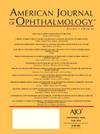角膜同种异体间环段(CAIRS)治疗圆锥角膜后的视觉和地形结果:系统回顾和荟萃分析。
IF 4.1
1区 医学
Q1 OPHTHALMOLOGY
引用次数: 0
摘要
目的角膜异体间环段(CAIRS)是一种治疗圆锥角膜等扩张性疾病,改善视力和角膜地形图的新方法。本分析旨在评价圆锥角膜植入术后视力及角膜地形图的变化。本系统文献综述和荟萃分析(ID: CRD42024612508)纳入了有关CAIRS治疗圆锥角膜的临床研究。排除标准为植入前环段、圆锥角膜以外的扩张性疾病,以及未报道的术前或术后结局参数。Cochrane、Embase、PubMed和Web of Science图书馆于2024年11月由两名独立研究人员进行了筛选。使用Evidence Project的偏倚风险工具评估偏倚风险。主要效果衡量指标是矫正距离视力(CDVA)的差异,前后。此外,使用随机效应模型分析并比较了CAIRS导致的未校正距离视力(UDVA)、球面等效视力(SE)、圆柱形、平面角膜密度、陡峭角膜密度、最大角膜密度(Kmax)、平均角膜密度、最薄角膜厚度和高阶像差(HOAs)的变化。此外,还记录了术后并发症。结果荟萃分析共纳入14项临床研究,共442只眼。CDVA的平均改善为0.37 logMAR (95% CI: 0.28, 0.46;14个研究;n = 442眼)。UDVA改善了0.43 logMAR (95% CI: 0.34, 0.55;11研究;n = 427眼)。SE提高4.59 D (95% CI: 3.35, 5.84;12的研究;n = 430眼)。Kmax降低了-4.49 D (95% CI: -6.05, -2.92;13个研究;n = 439眼),总hoa下降-0.33µm (95% CI: -0.62, -0.03;6研究;n = 171眼)。报告的一个严重不良事件(0.2%)是急性排斥反应,需要移植。结论本荟萃分析表明,CAIRS植入术是一种有效的手术,可显著改善圆锥角膜的UDVA、CDVA和地形图结果,并发症发生率低。本文章由计算机程序翻译,如有差异,请以英文原文为准。
Visual and Topographic Outcomes After Corneal Allogeneic Intrastromal Ring Segments for Keratoconus: A Systematic Review and Meta-Analysis
Purpose
Corneal allogeneic intrastromal ring segments (CAIRS) are a novel therapeutic approach to treat ectatic diseases such as keratoconus and improve visual acuity as well as corneal topography. This analysis aimed to evaluate the visual outcomes and corneal topography changes after CAIRS implantation for keratoconus.
Design
Systematic Review and Meta-Analysis.
Methods
In this systematic literature review and meta-analysis (ID: CRD42024612508) original peer-reviewed clinical studies on the effect of CAIRS in eyes with keratoconus were included. Exclusion criteria were preimplanted ring segments, ectatic diseases other than keratoconus, as well as no reported pre- or postoperative outcome parameters. Cochrane, Embase, PubMed and Web of Science libraries were screened in November 2024 by 2 researchers independently. The risk of bias was assessed using the Evidence Project risk of bias tool. The primary effect measure was the difference in corrected distance visual acuity (CDVA) before and after CAIRS. Additionally, changes in uncorrected distance visual acuity (UDVA), spherical equivalent (SE), cylinder, flat keratometry, steep keratometry, maximum keratometry (Kmax), mean keratometry, thinnest corneal thickness, and higher order aberrations (HOAs) after CAIRS were analyzed and compared using a random effects model. In addition, postoperative complications were documented.
Results
Fourteen clinical studies with a total of 442 eyes were included in the meta-analysis. The mean improvement in CDVA was 0.37 logMAR (95% CI: 0.28, 0.46; 14 studies; n = 442 eyes). UDVA improved by 0.43 logMAR (95% CI: 0.34, 0.55; 11 studies; n = 427 eyes). SE improved by 4.59 D (95% CI: 3.35, 5.84; 12 studies; n = 430 eyes). Kmax was reduced by -4.49 D (95% CI: -6.05, -2.92; 13 studies; n = 439 eyes) and total HOAs decreased by -0.33 µm (95% CI: -0.62, -0.03; 6 studies; n = 171 eyes). One severe adverse event (0.2%) reported was an acute rejection, which necessitated explantation.
Conclusions
This meta-analysis demonstrates that CAIRS transplantation is an effective procedure that can significantly improve UDVA, CDVA, and topographic outcomes in keratoconus eyes with low complication rates.
求助全文
通过发布文献求助,成功后即可免费获取论文全文。
去求助
来源期刊
CiteScore
9.20
自引率
7.10%
发文量
406
审稿时长
36 days
期刊介绍:
The American Journal of Ophthalmology is a peer-reviewed, scientific publication that welcomes the submission of original, previously unpublished manuscripts directed to ophthalmologists and visual science specialists describing clinical investigations, clinical observations, and clinically relevant laboratory investigations. Published monthly since 1884, the full text of the American Journal of Ophthalmology and supplementary material are also presented online at www.AJO.com and on ScienceDirect.
The American Journal of Ophthalmology publishes Full-Length Articles, Perspectives, Editorials, Correspondences, Books Reports and Announcements. Brief Reports and Case Reports are no longer published. We recommend submitting Brief Reports and Case Reports to our companion publication, the American Journal of Ophthalmology Case Reports.
Manuscripts are accepted with the understanding that they have not been and will not be published elsewhere substantially in any format, and that there are no ethical problems with the content or data collection. Authors may be requested to produce the data upon which the manuscript is based and to answer expeditiously any questions about the manuscript or its authors.

 求助内容:
求助内容: 应助结果提醒方式:
应助结果提醒方式:


